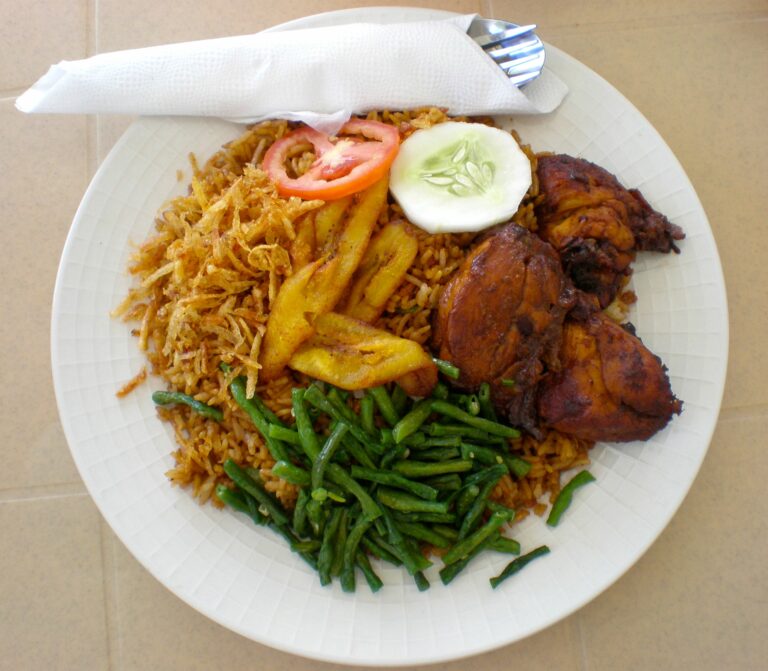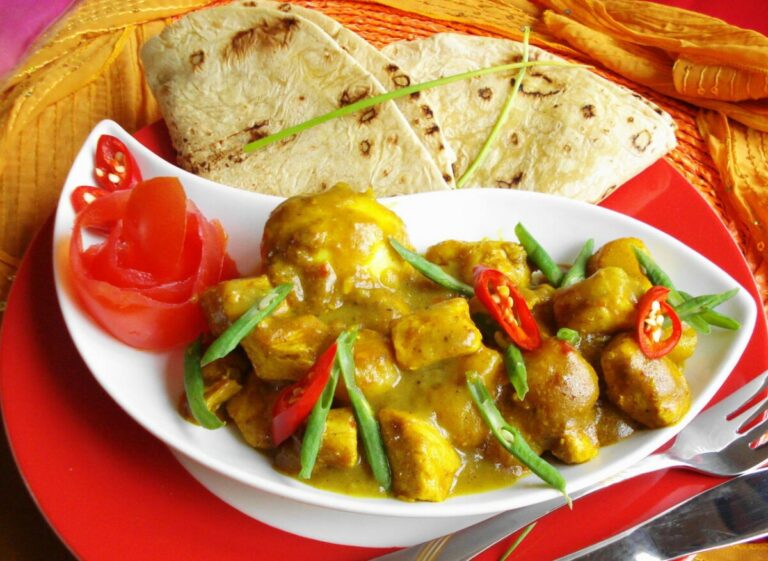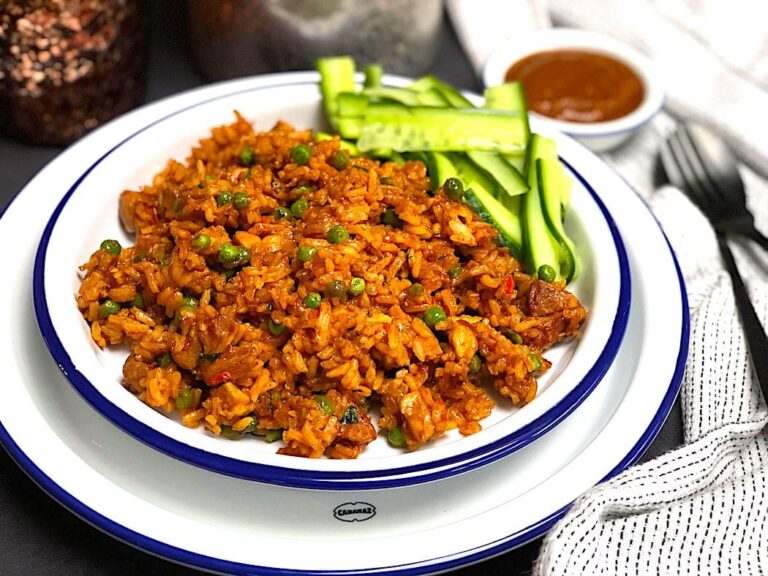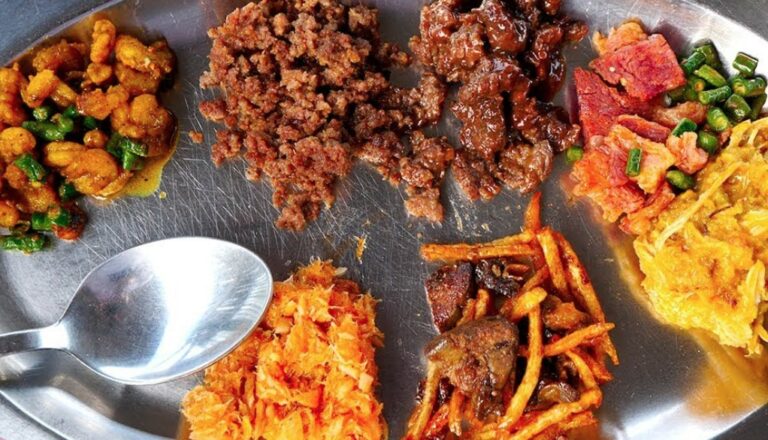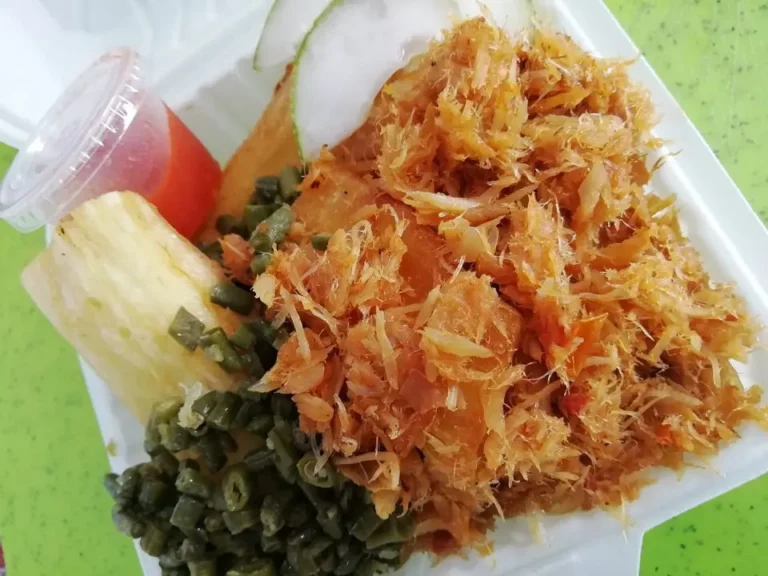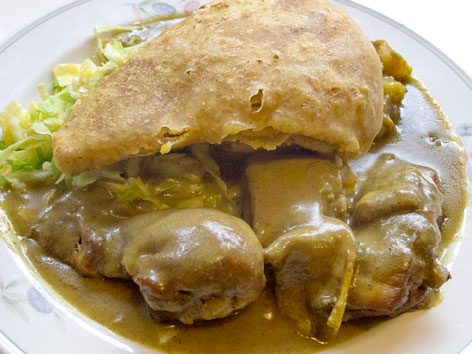Introduction to Surinamese Cuisine
Suriname, a small country in South America, is a melting pot of many cultures resulting in a unique cuisine that reflects the diversity of its people. Surinamese cuisine is a fusion of African, Indian, Indonesian, Chinese, Dutch, and native Amerindian influences. It is a flavorful and spicy cuisine that is often compared to Caribbean and Creole cuisines. Surinamese dishes are usually made with fresh ingredients, herbs, and spices, and are often served with rice, beans, vegetables, and meat.
Influences on Surinamese Cuisine
Surinamese cuisine is heavily influenced by the cultural and historical backgrounds of its people. The African influence can be seen in dishes such as pom, a casserole made with taro leaves, chicken, and spices. Indian cuisine is reflected in dishes like roti, a wrap made with a flatbread and filled with curried vegetables and/or meat. Chinese cuisine is evident in the use of soy sauce, oyster sauce, and five-spice powder in dishes like bami, a dish of Chinese-style fried noodles. Indonesian cuisine is also present in dishes like nasi goreng, a fried rice dish with vegetables, egg, and sometimes meat. The Dutch influence can be seen in dishes like pea soup, a hearty soup made with split peas and meat.
Common Ingredients in Surinamese Cuisine
Surinamese cuisine uses a wide range of ingredients, many of which are locally sourced or grown. Common ingredients include rice, beans, cassava, plantains, potatoes, and yams. Meat is also a staple of Surinamese cuisine, particularly chicken, beef, and pork, as well as seafood. Many Surinamese dishes incorporate spices and herbs, such as cumin, coriander, turmeric, and ginger. Other ingredients commonly used in Surinamese cuisine include coconut milk, tamarind, and cassareep, a thick sauce made from cassava.
Notable Dishes in Surinamese Cuisine
Surinamese cuisine is full of delicious and unique dishes that are worth trying. Some notable dishes include roti, a wrap filled with curried vegetables and/or meat; pom, a casserole made with taro leaves, chicken, and spices; bami, a dish of Chinese-style fried noodles; nasi goreng, a fried rice dish with vegetables, egg, and sometimes meat; and saoto soup, a chicken soup with noodles, bean sprouts, and spices. Other popular dishes include moksi meti, a mixed dish of rice and beans with meat; pastei, a meat pie; and bara, a fried dough ball served with chutney.
Traditional Methods of Preparing Surinamese Cuisine
Surinamese cuisine has a long history and many traditional methods of preparing dishes have been passed down through generations. For example, many Surinamese dishes are prepared using a tjobek and oelekan, two types of mortar and pestle used for grinding spices and herbs. Another traditional method is the use of a tajine, a clay pot used for cooking stews and casseroles. Many dishes are also cooked slowly over low heat for several hours to develop rich flavor and tenderness.
Modern Adaptations of Surinamese Cuisine
As with any cuisine, Surinamese cuisine is constantly evolving and adapting to changing tastes and trends. Modern adaptations of Surinamese cuisine include fusion dishes that incorporate elements of other cuisines, as well as vegan and vegetarian options. Some Surinamese chefs are also experimenting with new techniques and ingredients, such as sous vide cooking and exotic fruits and vegetables. Food trucks and pop-up restaurants are also popular in Suriname, offering a variety of creative and innovative dishes that are influenced by traditional Surinamese cuisine.




